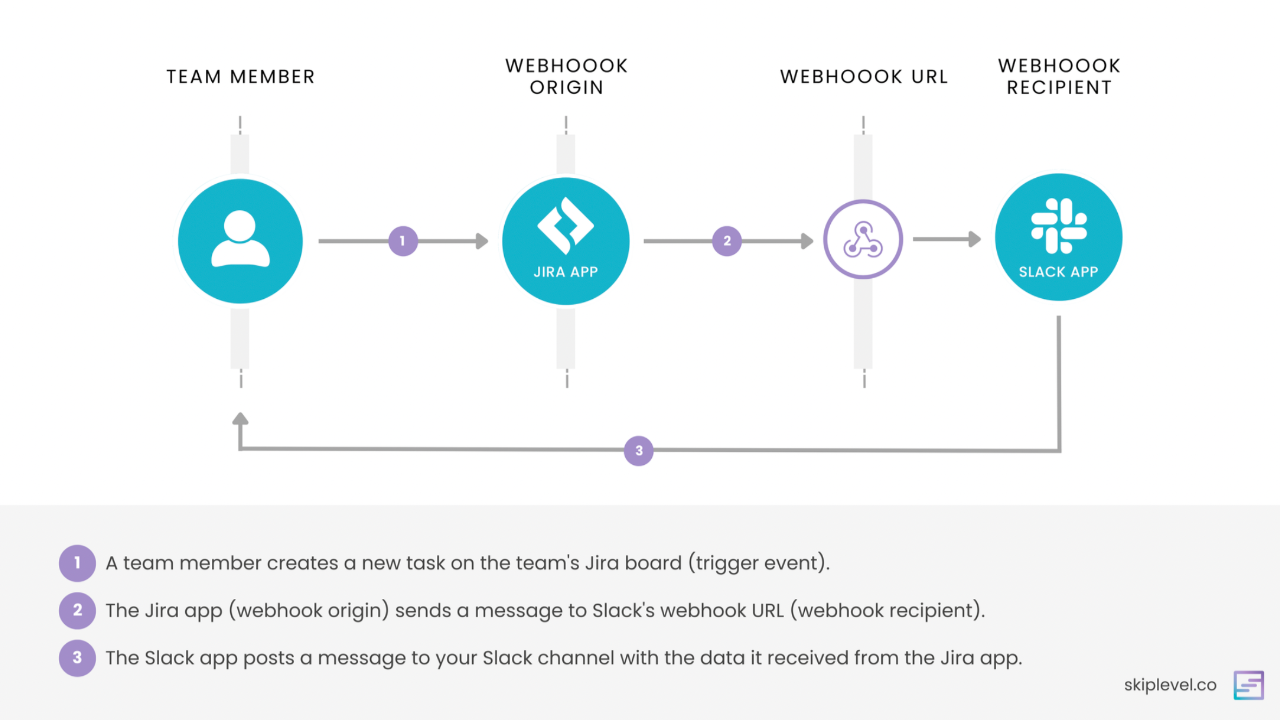What are webhoooks and what is an example?
Feb 28, 2023
Want to become more technical in just 4 weeks? Find out how the Skiplevel program can help.
Webhooks is a communication design pattern and it's a popular way for apps to provide real-time information to other apps via sending automated messages. They're automated messages sent from apps when something happens (a trigger event).
In the webhooks design, there are 3 main parts:
- Webhook origin: App where trigger event happens
- Webhook recipient: App that processes data sent from the webhook origin
- Webhook URL: The URL or address (lives within the webhook recipient) that the webhook origin sends message to when trigger event happens
Here's a real-world example:
Let's say you set up a webhook on your Slack channel to get a message whenever a new task is added to your Jira sprint board (or whichever project management tool you use).
A team member creates a new task on the team's Jira board (trigger event) → the Jira app (webhook origin) sends a message to Slack's webhook URL (webhook recipient) → the Slack app posts a message to your Slack channel with the data it received from the Jira app.
How webhooks are used in the real-world
There are 2 important things to note about webhooks:
- First, the webhook origin sends messages to the webhook recipient automatically when the trigger event happens. The automation is what makes webhooks so powerful and so widely used.
- Second, webhooks are uni-directional communication. This means the webhook origin app can send a message to the webhook recipient, but the webhook recipient won't initiate connection and message sending to the webhook origin. This point is important to differentiate between webhooks and websockets.
Webhooks is the technology you're leveraging when using workflow automation tools like Zapier. Workflow automation tools like Zapier has webhook URLs from thousands of apps and allow you to plug-and-play any of these webhooks together to create automatic and seamless workflows.
Sign up for the Skiplevel newsletter to get more content like this straight to your inbox.
Learn more about the Skiplevel program ⟶
Connect with Irene on LinkedIn and Twitter and follow Skiplevel on LinkedIn, Twitter, and Instagram.
Become more technical without learning to code with the Skiplevel program.
The Skiplevel program is specially designed for the non-engineering professional to give you the strong technical foundation you need to feel more confident in your technical abilities in your day-to-day role and during interviews.

